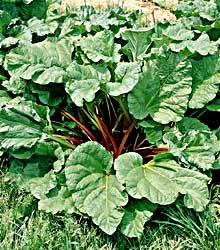

 |
 |
| Heirloom vegetables
are open-pollinated; they set seed naturally, often aided by wind, rain
or pollinating insects. Thus, seed saved will produce plants the
same as or very similar to the parents. A bit of diversity from plant
to plant among open-pollinated types is normal in these otherwise stable
and true breeding varieties.
Hybrids, on the other hand, are a result of cross-breeding two parents of different genetic makeup. Unlike open-pollinated plants, the seeds from hybrids will not come true from seed but will be highly variable and thus not desirable. Hybrids were originally developed for their high productivity, uniformity and wide adaptability. In addition, these hybrid vegetables ripen in a shorter period of time and they often have a tougher skin that allows them to be shipped great distances and stored for long periods with what is known as "shelf life."
|
| Home | Definition | History | Why Grow? |
| Old vs. New | Growing Tips | Harvest & Storage | Saving Seed |
 |
| Sampling | Public Gardens | Seed Exchanges | Seed Companies | Bibliography |